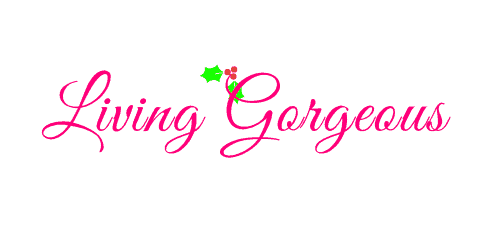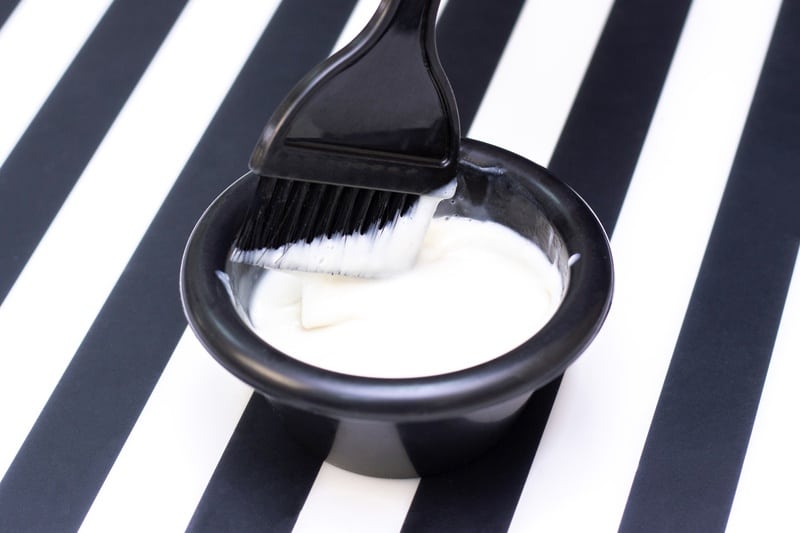While professional coloring techniques like balayage, ombré, and lowlights are best left to the experts, you can refresh your hair with new color without going to the salon.
But before doing it on your own, read our guide so you’ll avoid mistakes that could damage your hair. Whether you’re retouching your roots or coloring all of your hair, always use equal proportions of dye and developer.
It will require you to use measuring cups or scales so that a 50ml of dye will be mixed with 50ml developer and 25ml of dye with 25ml of the developer.
How to Determine the Amount of Hair Dye You Should Use?
The amount of dye you’ll use will depend on your hair length and thickness
If you’ll go for a full color, you might need a box of hair dye for short hair, or two boxes for long hair. Also, the measurements will be different if you’ll need root touchups or highlights. Do you know hair texture matters when dyeing your hair?
If you’ve got very fine hair, one box of dye can be enough, but thicker strands will need much dye on hand to ensure full coverage. This is because coarser hair textures suck up color faster while fine to medium textures doesn’t absorb color easily.
The ratio of dye to the developer is always equal
The only thing that change is the total amount of product, but the proportion will always be equal. If you’ll only need to retouch your roots, you might need 15ml of dye mixed with 15ml of the developer.
For short hair, 50ml of dye and 50ml of the developer should be enough. While most of them come in disposable containers, you should rely on measuring cups and scales if you’re going to use more product or less.
How Much Developer You Should Mix with Hair Dye?
The amount of the developer is always equal to the amount of hair dye
When deciding how much product you should use, always start with the right amount of hair dye. After all, the measurements of dye and developer will always be equal regardless of using more products or less.
Most at-home coloring kits come with dye and developer packaged together. Even if the products come in tubes, you should measure the dye and developer with scales or measuring cups to ensure accuracy.
Use the right strength of the developer without changing the proportions
In the hair coloring process, the thing that can be changed is the strength of the developer you’ll use—not the amount. The strength of the developer is referred to as “volumes,” which determine how much it can change your hair.
While 10 Volume developer is the most gentle, 20 volume will lift your hair into 1-2 levels and 30 volume will lift it into 2-3 levels. Whether you decide to use 10 Volume developer or 30 Volume developer, the amount of product you’ll use will always be equal to the amount of dye.
Most peroxide bottles have measurements on the sides such as 25ml, 50ml, 75ml, and such. To make sure you’ll create an accurate mixture, measure the developer with a measuring cup before mixing it with the dye. Remember, you wouldn’t get more lift by using more amount of developer—it lies on the developer strength, not the mix.
What Happens if You Don’t Put Enough Developer in Hair Dye?
Your mix will be too dry for application and can lead to a patchy color result. You can completely ruin the mixture since the right amount of developer is needed to penetrate the hair cuticle and lift or deposit color.
A hair developer contains hydrogen peroxide which can be activated when mixed with bleach or hair dye.
Even if you apply more dye and it seems like your hair is saturated with color, it won’t stick for long since the small amount developer cannot open the hair cuticles enough for the pigment to enter.
Also Read: How Much 20 Volume Developer to Mix With Hair Color?
What Happens if You Put Too Much Developer in Hair Dye?
The mixture will be too runny for application, and more challenging to work on. You may be able to lighten your hair, but you won’t deposit enough color.
If you’re aiming for a vibrant shade, you won’t likely get the desired result, since there isn’t enough dye in the mixture. More than that, the color won’t come out as intense, as the developer can fade the dye.
Tips on Mixing Hair Dye and Developer Accurately
Always measure everything with a scale and skip the guesswork
To make sure the formulas are accurate, rely on the scale and weigh the portions of dye and developer before mixing. Measuring cups come in handy, but digital scales are more efficient if you need to measure in grams. If you’ll only eye the mixture and don’t measure, you’ll likely get an uneven color result that will take more time to correct.
Mix the formula well to get the balanced pH level of the product
The balanced pH of the formula will give you the best results, that’s why measuring and mixing are very important. The consistency should be smooth, without chunks and lumps.
If the formula isn’t mixed properly, it won’t work well even if you evenly applied it to your strands. You may use plastic forks or silicone whisks instead of color brushes when mixing to prevent clumping.
Opt for a cream developer instead of a clear one
Clear developers tend to be messy and take a longer time to mix. To create an even mixture, you need to pour ¼ of the whole portion as you mix, which will avoid lumps from forming.
On the other hand, cream developers are easier to mix. You don’t have to match the brand of the developer to your dye but always opt for a good quality cream developer.
How to Dye Your Hair at Home?
Prepare your workspace and the things that you need
Apart from your preferred choice of hair dye and developer, prepare your measuring cups and digital scales, as well as non-metal bowl, silicone whisk, brush applicator, disposable shower cap, lip balm or Vaseline, and latex gloves.
Also, wear an old robe to avoid staining your clothes, and cover the floors and surfaces with old rags, newspapers, or garbage bags.
Protect your skin from the dye with lip balm or Vaseline
Hair dyes can also stain the skin, so apply lip balm or Vaseline along your hairline, ears, and neck before coloring your hair. Also, wear your disposable or latex gloves, and keep your workspace well ventilated to avoid inhaling the fumes.
Mix equal parts of hair dye and developer
Regardless of the strength of the developer, you should use equal amounts of dye and developer.
Use measuring cups and scales to make sure you’re getting the right amount of product. For 50ml of dye, you need 50ml of the developer, and 75ml of dye will require 75ml of the developer.
Aim for a smooth, creamy consistency—not too dry or too runny. You may use a silicone whisk or plastic fork when mixing to dissolve any lumps. Unless you’re a professional, avoid mixing different shades of hair dye, and diluting the mixture with water.
Start coloring your strands
Unless your hair is too long, take some time sectioning your hair prior to mixing the dye and developer.
Depending on your preference, you can apply the mixture on a dry hair, since wet hair can dilute the dye and even make the consistency runny. Apply the color evenly and put a shower cap on while you wait.
Let it sit for 30 minutes or so, depending on the instruction on the packaging.
Wash your hair thoroughly and follow with a conditioner
After the processing time, rinse your hair immediately and follow with a conditioner to nourish your hair. On your next shower, only use color-safe shampoo and conditioners and skip those clarifying and sulfate-based hair products.
Related Questions:
How hair developer affects the color result?
It can lift your hair depending on the strength of the hydrogen peroxide it contains. A 10 Volume developer is a great choice if you only need to add a tint to your hair.
But a 30 Volume developer works best if you want a lighter and deeper color. A 40 Volume developer can lift your hair into 4 shades, and is best for drastic color transformations.
Can you use hair dye without a developer?
Yes, you can, but the results won’t last long compared to permanent hair dyes. These temporary hair colors only deposit pigment on the surface of the hair and can be washed out easily.
It’s ideal for those who want to try out a new hair trend without commitment. However, you should not use a permanent hair dye without the developer, since the color won’t stick to your hair shaft.

